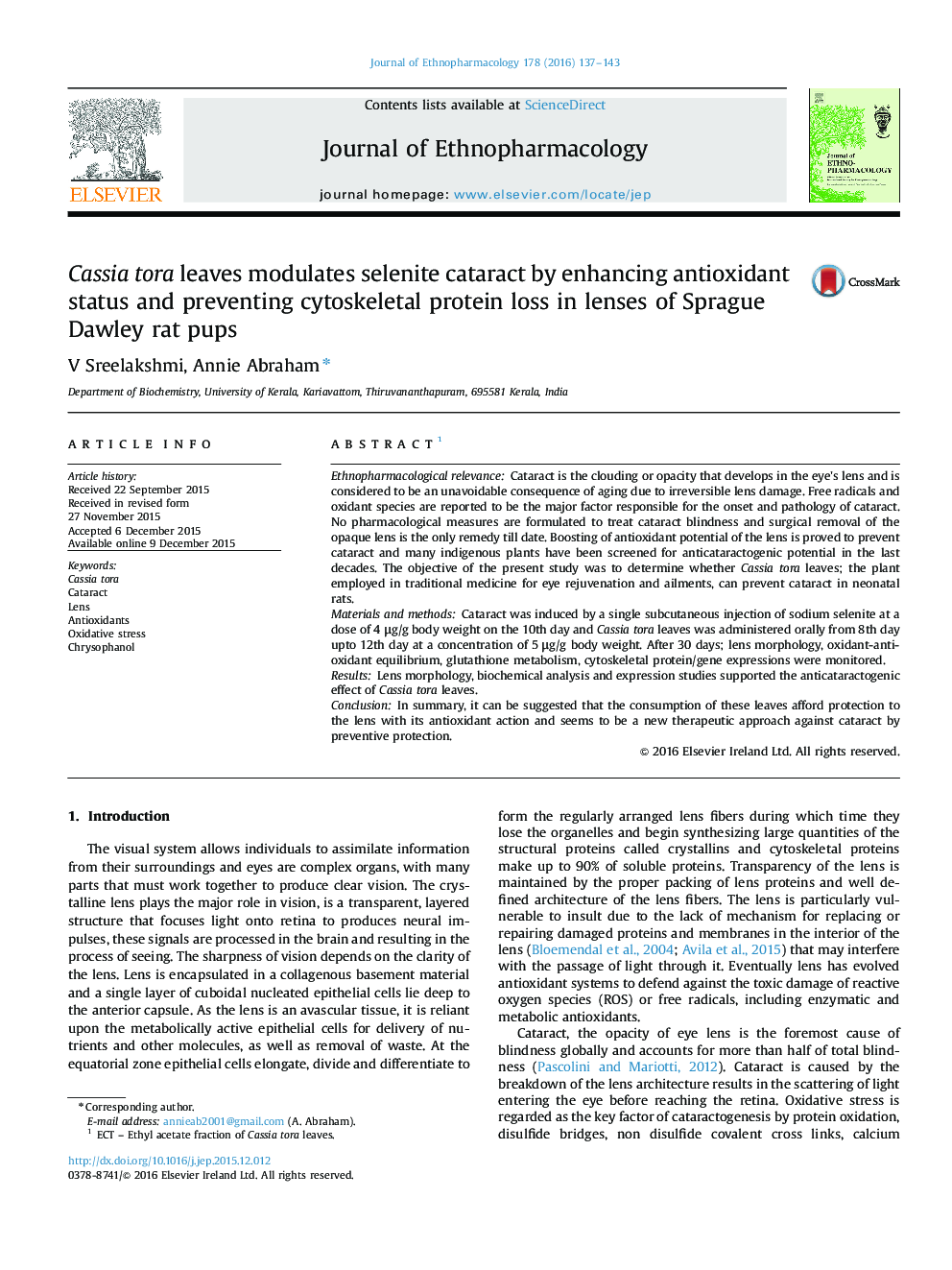| Article ID | Journal | Published Year | Pages | File Type |
|---|---|---|---|---|
| 5835287 | Journal of Ethnopharmacology | 2016 | 7 Pages |
1Ethnopharmacological relevanceCataract is the clouding or opacity that develops in the eye's lens and is considered to be an unavoidable consequence of aging due to irreversible lens damage. Free radicals and oxidant species are reported to be the major factor responsible for the onset and pathology of cataract. No pharmacological measures are formulated to treat cataract blindness and surgical removal of the opaque lens is the only remedy till date. Boosting of antioxidant potential of the lens is proved to prevent cataract and many indigenous plants have been screened for anticataractogenic potential in the last decades. The objective of the present study was to determine whether Cassia tora leaves; the plant employed in traditional medicine for eye rejuvenation and ailments, can prevent cataract in neonatal rats.Materials and methodsCataract was induced by a single subcutaneous injection of sodium selenite at a dose of 4 μg/g body weight on the 10th day and Cassia tora leaves was administered orally from 8th day upto 12th day at a concentration of 5 μg/g body weight. After 30 days; lens morphology, oxidant-antioxidant equilibrium, glutathione metabolism, cytoskeletal protein/gene expressions were monitored.ResultsLens morphology, biochemical analysis and expression studies supported the anticataractogenic effect of Cassia tora leaves.ConclusionIn summary, it can be suggested that the consumption of these leaves afford protection to the lens with its antioxidant action and seems to be a new therapeutic approach against cataract by preventive protection.
Graphical abstractDownload high-res image (184KB)Download full-size image
